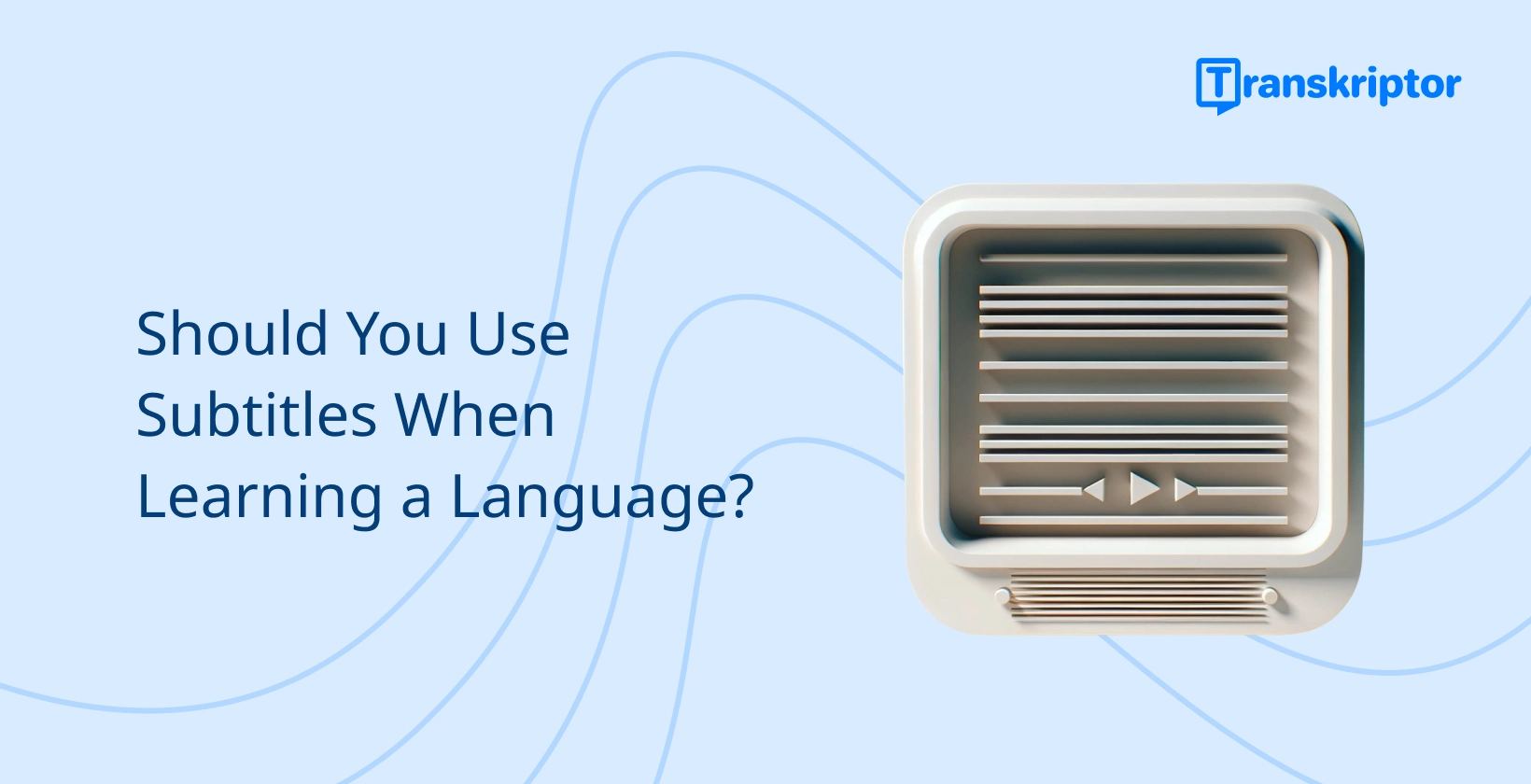There are caveats though and this isn’t a perfect solution so in the below guide, I take a look at using subtitles when learning a language, its pros and cons, and some useful tips to get you started.
Pros of Using Subtitles in Language Learning
Enhancing Vocabulary and Language Recognition
The best benefit of using subtitles to learn a language is the improved vocabulary and learning you get. Subtitles help give context to the language and open up a whole new world of idioms and phrases that may not have been clear with audio only. You will naturally learn new words and improve your comprehension of the foreign language.
Improving Listening and Pronunciation Skills
Oftentimes when listening to someone, the correct pronunciation may be missed or you may mishear words and thus learn them incorrectly. When you have the subtitle displayed for those words, your listening improves, but your pronunciation should skyrocket too. This is because you have the actual word there to give context and to link properly to the speech.

Improving Grammar
When listening to a foreign language, it is virtually impossible to get the grammar correct. We can infer things like full stops and question marks from intonation and pauses, but subtitles make the grammar implicit. You can see these things without confusion and it’s also great for special additions like the tilde over certain letters.
Facilitating Comprehension of Cultural Context
Sometimes cultural importance and context are lost in speech and subtle things can often be missed. Learning a language with subtitles can correct this and often include more context and culturalism than the speech ever could.
Cons of Using Subtitles in Language Learning
Dependency on Written Translation
When you get used to something, your brain struggles to function properly when it’s not there anymore and this can be the same for using subtitles for learning a language. If you suddenly turn the subtitles off, will you have the same level of comprehension and fluency? To avoid this happening, do a little of both and learn with and without subtitles.
Potential Distraction From Spoken Language
I can attest to this from personal experience - when I watch something with subtitles, I often become distracted and pay more attention to the subtitles as opposed to the spoken language and what’s going on. Make sure that your primary focus is on the spoken foreign language and that you are using the subtitles as an aid - not the sole learning tool.
Tips to Use Subtitles When Learning a Language
Start by Watching Short Videos
As with most learning processes the key is to start small. Instead of jumping the gun and watching a full-length movie in a foreign language with foreign subtitles, why not watch a few TikToks, YouTube Shorts, or short YouTube videos of around 10 minutes?
You could even convert video to text after so you have a reference for future learning. As you get familiar with the process and your comprehension improves you can look to watch longer videos, documentaries, and TV series.

Turn on Subtitles for a TV Show You are Watching
The learning process is usually easier when you are engaged with the content. So, instead of ploughing through a boring learning video that you have no interest in, why not change the language and put subtitles on for that Netflix show you are watching?
This simple switch to interesting and relevant content can enhance the usefulness of the subtitles and audio as you are more invested in what’s happening.
Use Subtitles for a Show or Film You Know Word for Word
To take the above one step further, why not watch your favorite TV show or movie in a different language and turn subtitles on in the same language?
For example, I can’t count the number of times I’ve watched the Harry Potter films. I’m pretty sure I know most of them word for word, so in an instance like this, the transition to a foreign language should be easier, and you should be able to learn quicker due to familiarity and memory.
Subtitles Can be a Fantastic Language Learning Aid
So, should you use subtitles when learning a language? Certainly! Having a written representation of the spoken language can be hugely beneficial and boost your learning capacity. You benefit from improved comprehension, better grammar, and an improved understanding of cultural context.
Be careful not to become reliant on subtitles alone though and make sure that you still emphasize listening to the language.


